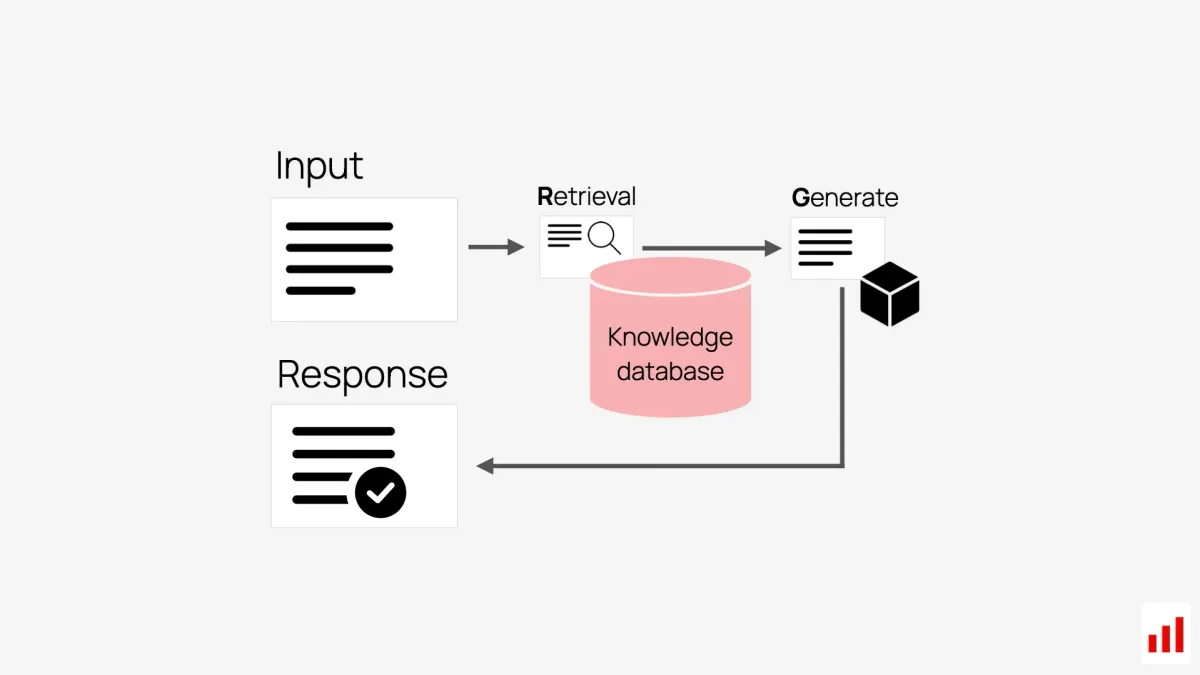RAG System Simplified - AI On Your Data

If you’ve been hearing “RAG” tossed around in tech meetings, investor decks, or even client conversations I’ll break down what Retrieval-Augmented Generation (RAG) is, why it matters, and how you can apply it without getting lost in tech jargon.
What is RAG in plain terms
RAG, is like ChatGPT, but before that AI gives an answer, it checks (retrieves) information from up-to-date sources or your own internal documents. Then it uses both the retrieved info and what it already “knows” based on the AI model you're using to generate an accurate response. So you'll have AI will work on your data.
Why is this useful?
Because without retrieval, AI can produce mistakes (hallucinations), out-dated info, or vague responses. RAG helps anchor the AI’s output to what’s current and relevant.
Why business leaders should care about implementing RAG
Breaking down RAG benefits:
Accuracy and trust: By tying responses to real, controlled sources, RAG reduces “hallucinations” and boosts user confidence.
Custom, domain-relevant answers: Because the AI can pull from your internal documents, policies, past reports, customer data - it can give answers tuned to your company’s context. Directors, executives, or customers get info that “feels grounded.”
Cost effectiveness: You don’t have to retrain the whole AI model every time something in your field changes. Just update the external knowledge base. That’s cheaper and faster.
Scalability across functions: RAG isn’t just for customer support. Use it in legal, finance, operations, sales, even content marketing. Multiple departments can benefit.
What are the Challenges?
Data quality and relevance: If your knowledge base (documents, databases) is messy, out-of-date, or irrelevant, retrieved info can mislead rather than help. The AI might pick up wrong or incomplete inputs.
Security and access control: You’ll need to ensure sensitive company data is protected. RAG systems often pull from internal sources. Make sure you implement a certain level of control on who sees what.
Maintenance overhead: You need to keep updating the external sources, indexing, ensuring search tools are working well. If this is neglected, benefits fade.
My opinion & advice on Implementing RAG
If I were advising a mid to large company (or a fast-growing scale-up), I’d say:
1 - Don’t wait. The companies that get RAG functioning well will gain an edge in information flow, trust with customers, and internal efficiency.
2 - Pilot first, scale later. Start with something small, measure results (time saved, error reduction, satisfaction). Then invest more once you know what works.
3 - Prioritize data hygiene. A messy database will doom a RAG project faster than technical complexity. Clean up document structure, naming, versioning.
4 - Security is non-negotiable. Ensure you control access to sensitive documents. Audit logs, permissions, encryption - these must be built in from day one.
Thank you for reading - Arjus




